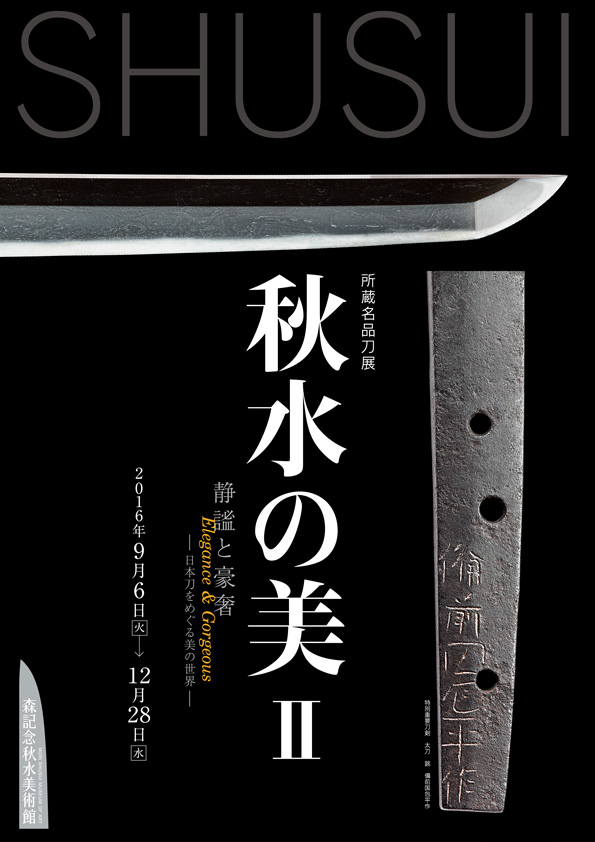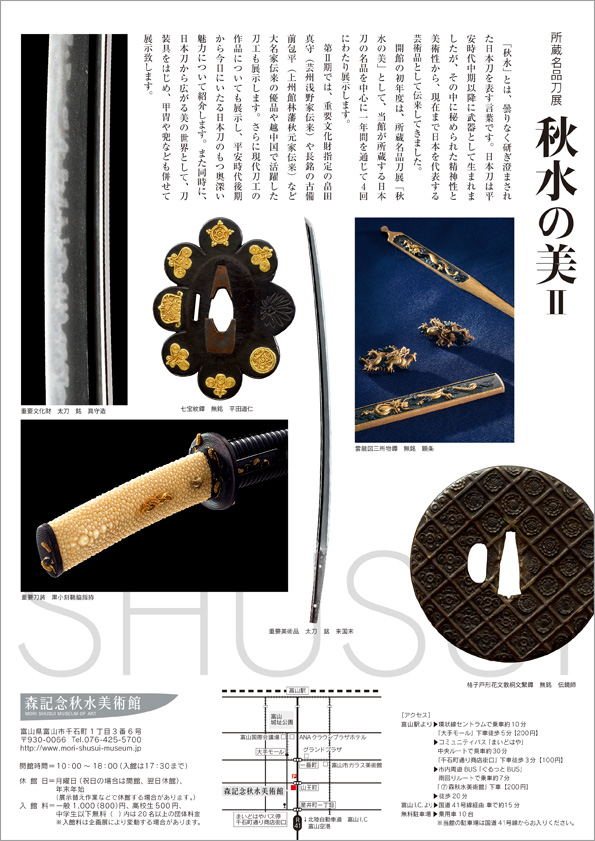“Shusui,” literally “autumn water,” is a term used to describe the pure, unclouded shine of polished Japanese swords. Though they were first produced as weapons back in the mid Heian period (10th and 11th c.), over time, the latent spirituality and artistic beauty of swords led them to be considered works of art that are representative of Japan, even today.
For our first year open, the museum is holding a four-part Shusui Beauty exhibit, with a focus on truly superb swords from the museum’s collection.
This second session features heirlooms from daimyo (feudal lord) families, including a sword by Hatakeda Sanemori (heirloom of the Asano family of Geishu Province, in present-day Hiroshima Prefecture; Important Cultural Property) and a piece by Kanehira of the Ko-Bizen (Old Bizen) school that is inscribed with detailed information on its production (heirloom of the Akimoto family of the Joshu Tatebayashi Domain, in present-day Gunma Prefecture), as well as other items made by swordmakers who were active in Etchu Province (present-day Toyama Prefecture). This exhibition also includes swords by contemporary swordmakers, for a look at the beauty of Japanese swords spanning a time frame that extends as far back as the late Heian period (11th and 12th c.), as well as other sword-related items like sword fittings, armor, and helmets.





 Back
Back